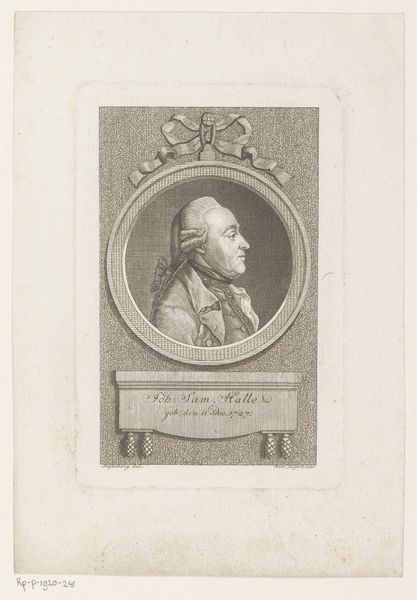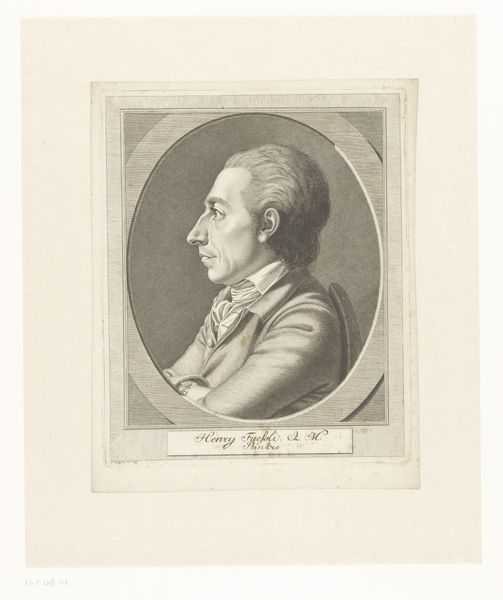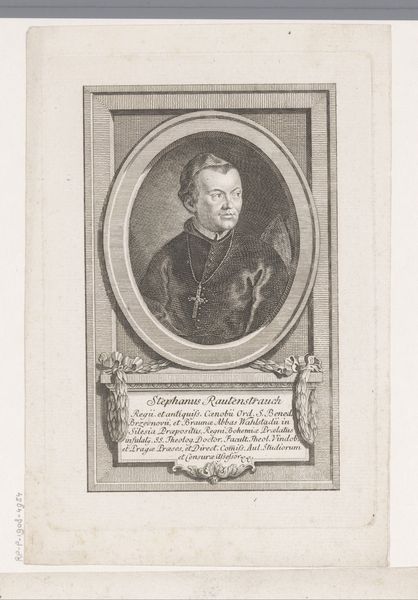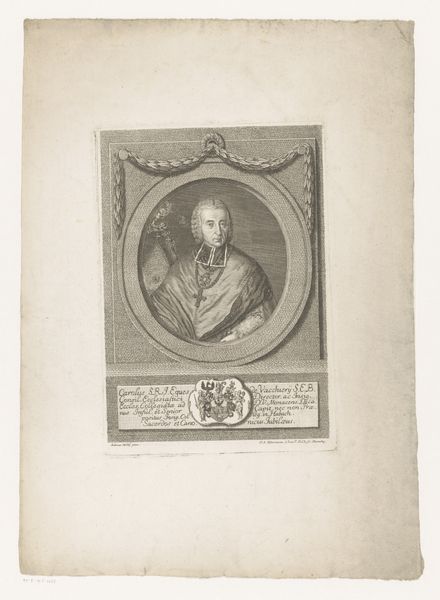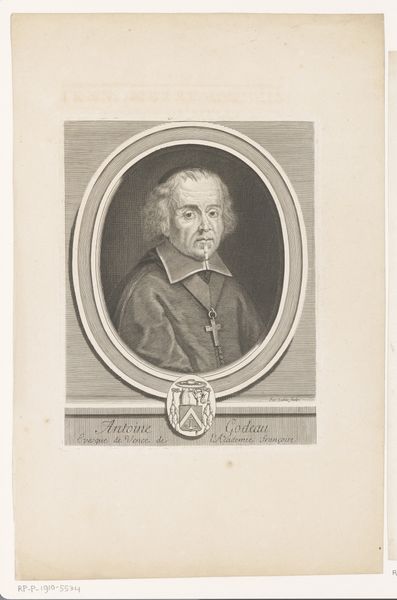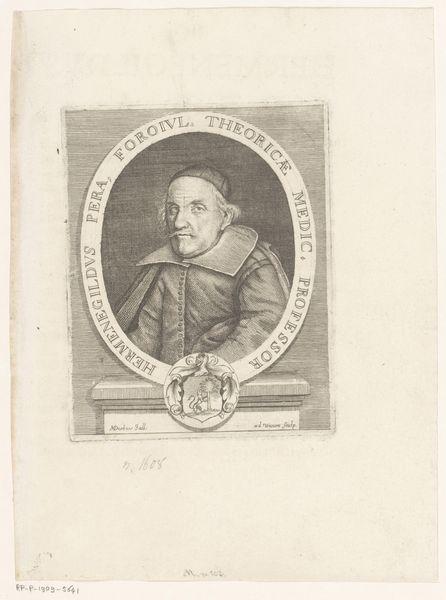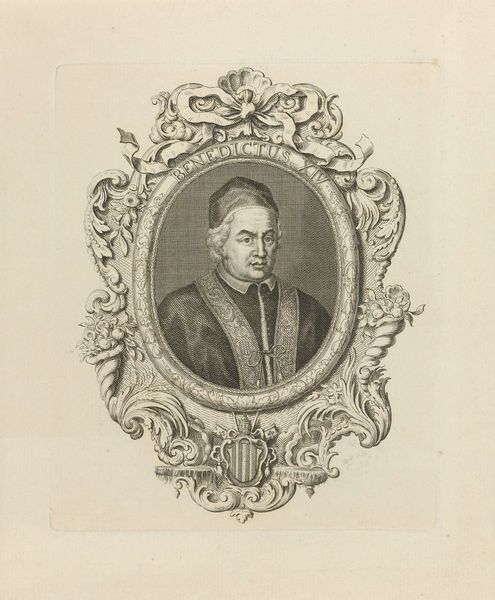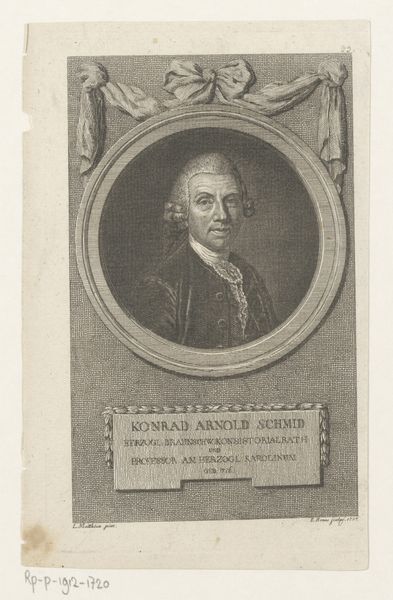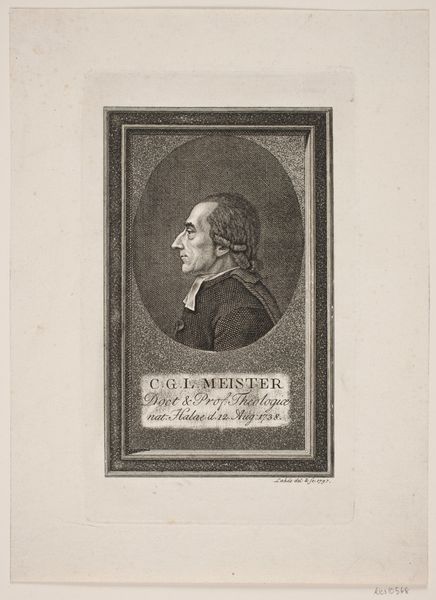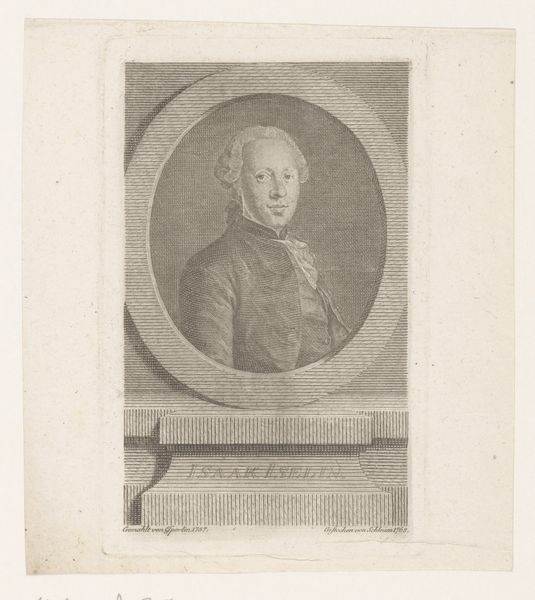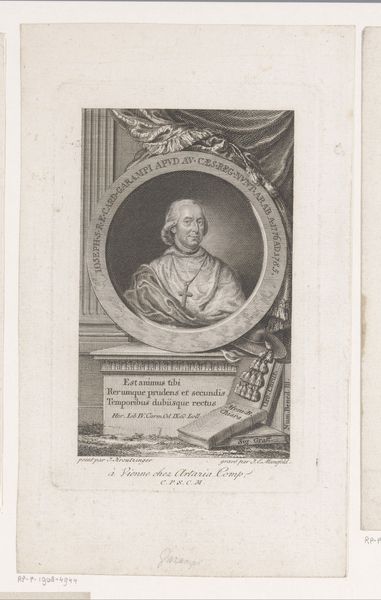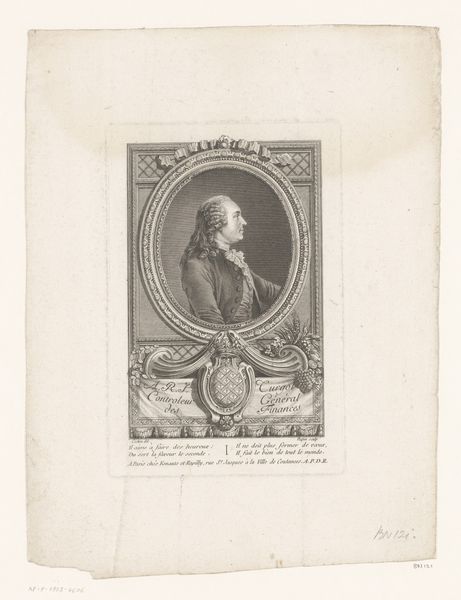
print, engraving
#
portrait
#
neoclacissism
# print
#
history-painting
#
academic-art
#
engraving
Dimensions: height 210 mm, width 172 mm
Copyright: Rijks Museum: Open Domain
Curator: This is an engraving, “Portret van Henri de Puyt,” created by J.F. De La Rue in 1787. You can currently find it on display here at the Rijksmuseum. Editor: It's a somber little print, isn't it? The tight hatching creates an almost claustrophobic effect, containing the subject. The oval frame emphasizes the isolation. Curator: That’s a key element of neoclassical portraiture; the attempt to capture the essence of an individual while simultaneously presenting them as an ideal. It aims for a timeless representation of civic virtue, reflecting an era’s pursuit of order. Notice the formal dress and simple presentation that echoes ideals of the French Revolution. Editor: The emphasis on line over color definitely contributes to that austerity. It's all about structure, the carefully delineated forms creating a sense of controlled, rational observation. It's emotionally restrained. Curator: Exactly, and look closer—the seemingly simple presentation belies a complexity of symbols. Puyt's gaze meets ours directly, projecting authority and perhaps even wisdom. Editor: Perhaps. Or perhaps a touch of resignation? The etched lines around his eyes tell a story, though whether it’s one of triumph or weariness is left ambiguous. And the engraver clearly relished in textures and density. Curator: A reflection of its historical context, perhaps. Neoclassical art sought to impart moral lessons, and portraits often aimed to preserve the memory of significant individuals. Consider the social role filled by the subject; as written at the bottom, Puyt was syndic for the nation of St. Laurent in Bruxelles. Editor: So, in essence, it’s a piece about representation itself, a distilled version of a man for public consumption. But does it truly tell us anything of the man? Does the man matter, or does the sign stand alone? Curator: The point of intersection, I suppose, between lived experience and curated legacy. Editor: A delicate, finely wrought debate rendered in ink.
Comments
No comments
Be the first to comment and join the conversation on the ultimate creative platform.
